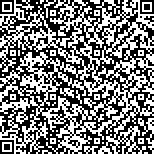| Quote
: |
蒋屏,李玉丽,郝兴宇,罗璇,彭汇宜,袁振仪.基于中医传承辅助平台初步探索中医二级预防儿童过敏进程相关疾病的诊疗思路[J].湖南中医药大学学报英文版,2023,43(3):501-511.[Click to copy
] |
|
| |
|
|
| This paper
:Browser 1465times Download 859times |
| 基于中医传承辅助平台初步探索中医二级预防儿童过敏进程相关疾病的诊疗思路 |
| 蒋屏,李玉丽,郝兴宇,罗璇,彭汇宜,袁振仪 |
| (湖南中医药大学第一附属医院, 湖南 长沙 410007;湖南中医药大学中医学院, 湖南 长沙 410208) |
| 摘要: |
| 目的 挖掘中医药治疗儿童过敏进程相关疾病证候及用药规律,初步探索中医二级预防过敏进程相关疾病的诊疗思路。方法 以过敏进程相关疾病中西医病名作为检索词,在中国知网、中国学术期刊数据库、中文科技期刊数据库等电子文献数据库检索临床观察类文献,利用中医传承辅助平台(V2.5)软件进行数据挖掘分析。结果 过敏进程相关三病多为肺脾气虚证,辛夷、甘草、白术、防风、黄芪等治疗变应性鼻炎使用频次较高;甘草、茯苓、生地黄、白鲜皮、防风等在治疗特应性皮炎中应用较多;甘草、半夏、茯苓、白术、麻黄则多配伍在支气管哮喘的治疗中。对这3个过敏进程相关疾病的虚证进行分析发现,白术、甘草、茯苓、黄芪、人参等应用频次较高,此即玉屏风散合六君子汤减味方。治疗变应性鼻炎的配伍中药以温性为主,其次为平、寒性,辛、甘味居多,主要归肺、脾两经;治疗特应性皮炎的配伍中药则以寒、温性为主,多用甘、苦味,主归脾、肝两经;治疗支气管哮喘的配伍中药以温、寒性为主,主归肺、脾两经;治疗过敏进程相关三病之虚证的配伍中药以温、平性为主,甘、苦味多见,主归脾、肺两经。治疗变应性鼻炎相关方剂出现频次较高的药物模式为甘草-辛夷、苍耳子-辛夷、白芷-辛夷;治疗特应性皮炎相关方剂出现频次较高的药物模式为甘草-茯苓、白鲜皮-甘草、甘草-生地黄;治疗支气管哮喘相关方剂出现频次较高的药物模式为半夏-甘草、甘草-茯苓、白术-茯苓;治疗过敏进程相关三病方剂中出现频次并列较高的药物模式为白术-甘草、白术-茯苓、黄芪-白术。结论 临床辨证过敏进程相关疾病以肺脾气虚证为主,以玉屏风散合六君子汤加减预防过敏进程相关疾病具有可行性。 |
| 关键词: 儿童过敏进程 变应性鼻炎 特应性皮炎 支气管哮喘 中医药 中医传承辅助平台 |
| DOI:10.3969/j.issn.1674-070X.2023.03.019 |
| Received:October 11, 2022 |
| 基金项目:湖南省重点研发计划项目(2018SK2111);湖南省教育厅重点项目(18A217);全国名老中医药专家传承工作室建设项目(国中医药人教函〔2014〕20号);湖南中医药大学中医学国内一流建设学科项目(4901-020000200207)。 |
|
| Preliminary exploration of diagnosis and treatment ideas for secondary prevention of allergic process-related diseases in Chinese medicine based on the Chinese medicine inheritance auxiliary platform |
| JIANG Ping,LI Yuli,HAO Xingyu,LUO Xuan,PENG Huiyi,YUAN Zhenyi |
| (The First Hospital of Hunan University of Chinese Medicine, Changsha, Hunan 410007, China;College of Chinese Medicine, Hunan University of Chinese Medicine, Changsha, Hunan 410208, China) |
| Abstract: |
| Objective To explore the patterns and medication rules of children's allergic process-related diseases treated with Chinese medicine as well as the diagnosis and treatment ideas of secondary prevention of allergic process-related diseases in Chinese medicine. Methods The Chinese and western medicine disease names related to allergic process were searched, the clinical observation literature was retrieved from the electronic literature databases such as China national knowledge internet (CNKI), China Science Periodical Database (CSPD) and China Science and Technology Journal Database (CSTJ), and the data mining analysis was carried out by Chinese Medicine Inheritance Auxiliary Platform (V2.5) software. Results The three diseases related to the allergic process were mostly due to lung-spleen qi deficiency, and the following Chinese medicinals were used frequently. Xinyi (Flos Magnoliae), Gancao (Radix et Rhizoma Glycyrrhizae), Baizhu (Rhizoma Atractylodis Macrocephalae), Fangfeng (Radix Saposhnikoviae) and Huangqi (Radix Astragali) were applied to treat allergic rhinitis; medicinals such as Gancao (Radix et Rhizoma Glycyrrhizae), Fuling (Poria), Shengdihuang (Radix Stellariae), Baixianpi (Cortex Dictamni), and Fangfeng (Radix Saposhnikoviae) were often used in the treatment of atopic dermatitis; while other medicinals such as Gancao (Radix et Rhizoma Glycyrrhizae), Banxia (Rhizoma Pinelliae), Fuling (Poria), Baizhu (Rhizoma Atractylodis Macrocephalae), and Mahuang (Herba Ephedrae) were more compatible in the treatment of bronchial asthma. The analysis of the deficiency patterns of these three allergy-related diseases revealed that Baizhu (Rhizoma Atractylodis Macrocephalae), Gancao (Radix et Rhizoma Glycyrrhizae), Fuling (Poria), Huangqi (Radix Astragali), and Renshen (Radix et Rhizoma Ginseng) were frequently used as the flavor-reduced formula namely Yupingfeng Powder combined with Liujunzi Decoction; most Chinese medicinals in compound formulas for treating allergic rhinitis were warm in nature, followed by those neutral and cold in nature, meanwhile, most of them were sweet and pungent in flavor, mainly acting on the meridians of lung and spleen; the Chinese medicinals in compound formulas for atopic dermatitis were mainly cold and warm in nature, sweet and bitter in flavor, mainly acting on the meridians of the spleen and liver; the Chinese medicinals in compound formulas for treating bronchial asthma were mainly warm and cold in nature, and mainly acted on meridians of the lung and spleen; the Chinese medicinals in compound formulas for treating deficiency pattern of the three diseases related to allergic process were mainly warm and neutral in nature, sweet and bitter in flavor, mainly acting on the meridians of the spleen and lung. The drug patterns with high frequency of allergic rhinitis formulas were Gancao (Radix et Rhizoma Glycyrrhizae)-Xinyi (Flos Magnoliae), Cangerzi (Fructus Xanthii)-Xinyi (Flos Magnoliae), Baizhi (Radix Angelicae Dahuricae)-Xinyi (Flos Magnoliae); the drug patterns with high frequency of prescriptions for treating atopic dermatitis were Gancao (Radix et Rhizoma Glycyrrhizae)-Fuling (Poria), Baixianpi (Cortex Dictamni)-Gancao (Radix et Rhizoma Glycyrrhizae), Gancao (Radix et Rhizoma Glycyrrhizae)-Shengdihuang (Radix Stellariae); the drug patterns with high frequency of bronchial asthma formulas were Banxia (Rhizoma Pinelliae)-Gancao (Radix et Rhizoma Glycyrrhizae), Gancao (Radix et Rhizoma Glycyrrhizae)-Fuling (Poria), Baizhu (Rhizoma Atractylodis Macrocephalae)-Fuling (Poria); for treating the three diseases related to allergic process, the drug patterns with high frequency were Baizhu (Rhizoma Atractylodis Macrocephalae)-Gancao (Radix et Rhizoma Glycyrrhizae), Baizhu (Rhizoma Atractylodis Macrocephalae)-Fuling (Poria), Huangqi (Radix Astragali)-Baizhu (Rhizoma Atractylodis Macrocephalae). Conclusion Based on clinical pattern, allergic diseases are mainly due to the deficiency of lung-spleen qi, and it is feasible to use Yupingfeng Powder combined with Liujunzi Decoction to prevent allergic diseases. |
| Key words: children's allergic march allergic rhinitis atopic dermatitis bronchial asthma traditional Chinese medicine Traditional Chinese Medicine Inheritance Auxiliary Platform |
|

二维码(扫一下试试看!) |
|
|
|
|


